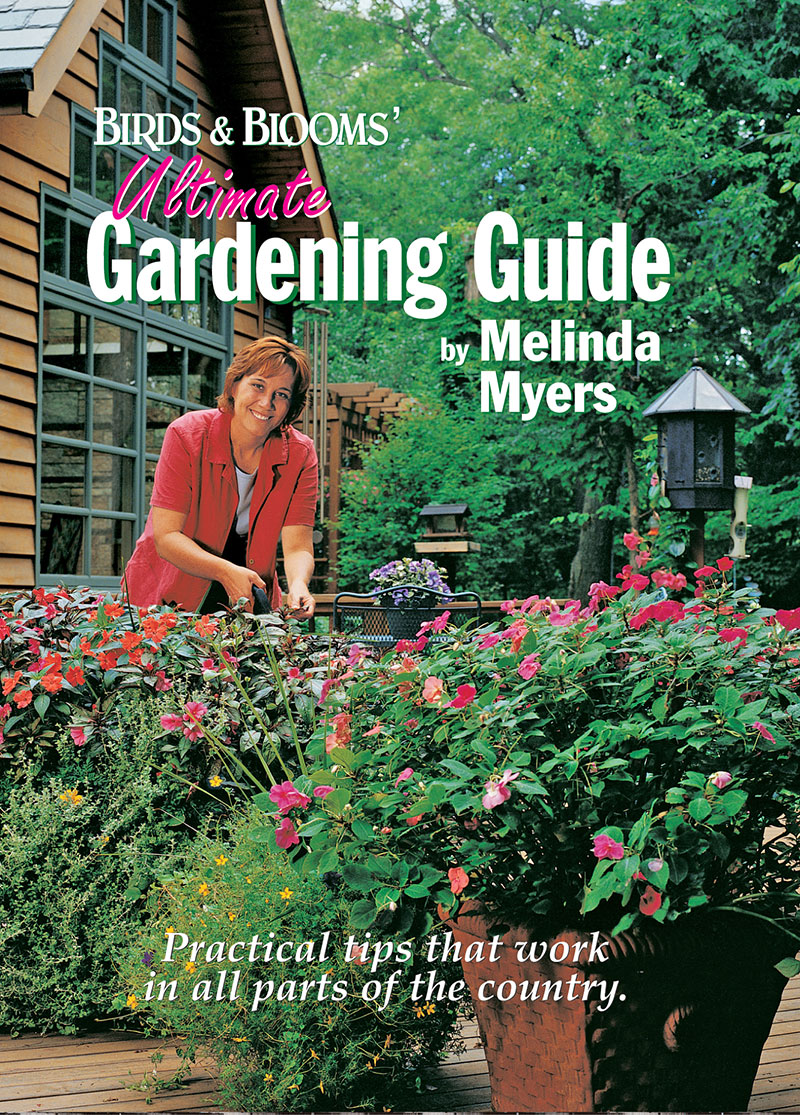
March
Flowers & Ornamental Grasses
Flowers & Ornamental Grasses
- Start removing winter protection when temperatures begin hovering above freezing for about a week or new growth appears.
- Gently tamp back into the soil or replant any coral bells, daylilies and other perennials that frost heaved out of the soil.
- As the snow and ice recede, it’s time to get busy cleaning up the garden. Remove any stems and seedpods left for winter interest. Wait to compost any items that might be housing beneficial insects. Pile them out of the way – then compost in early summer.
- Prune Russian sage, Caryopteris, and butterfly bushes (non-invasive cultivars) down to 6 inches above the soil.
- Apply a low-nitrogen slow release fertilizer to hardy bulbs, in need of a nutrient boost, as soon as they emerge from the soil.
- Take a soil test anytime the ground is not frozen or hasn’t been recently fertilized. The results will help you determine how much and what type of fertilizer you need for the plants you are growing.
- Locate areas in your landscape where you want to add new planting beds. Northern gardeners may need to wait for the snow and ice to recede.
- Begin soil preparation as soon as the soil can be worked. Grab a handful of soil and lightly squeeze. Gently tap with your finger. If it breaks into smaller pieces it is ready to work.
- Monitor seedlings for damping off disease that causes seedlings to collapse and the stem to rot at the soil line.
- Start tender bulbs such as cannas, dahlias, caladiums, callas, and tuberous begonias indoors for earlier bloom in the garden.
- Gardeners in milder climates can sow seeds of cool season annuals like larkspur and California and Iceland poppies outdoors when the soil is workable. Check the back of the seed packet for more specific information.
- Plant transplants of cool season annuals such as sweet alyssum, pinks, calendulas, snapdragons and pansies as soon as they are available in the garden center.
- Dig and divide overgrown and crowded summer and fall blooming perennials and ornamental grasses as soon as new growth emerges. Some of us are waiting for the snow to melt.
- Repair, locate or purchase cold frames, row covers and other season-extending materials if you plan an early start to the growing season.
- Continue monitoring existing and new plantings for animal damage. Make sure fencing is secure, replenish repellents as needed and alternate scare tactics. Use a variety of tactics for the greatest success.
Fruits, Vegetables & Herbs
Fruits, Vegetables & Herbs
- Add a little zip and nutrition to your meals with homegrown microgreens.
- Make a list of herbs you use for cooking, crafts and gifts. Plan to grow a few of your favorites in this year’s garden.
- Prune out black knot galls (black lumpy growths) on plums, cherries and other stone fruit this month to prevent the release of spores and reduce future infections.
- Continue winter pruning and thinning raspberries if this has not yet been done.
- Locate areas in your landscape where you want to add new planting beds. Mark beds and begin preparing as soon as the soil can be worked.
- Have the soil tested when establishing new beds or struggling with poor productivity in existing garden beds. You can take a soil test anytime the ground is not frozen and hasn’t been recently fertilized.
- Plant asparagus roots as soon as the soil can be worked. This will be next month for those gardening in colder regions.
- Check seed packets for recommended planting dates. Cool season crops like beets, carrots, radishes, turnips, leaf lettuce, spinach, mustard greens, onion sets, peas and potatoes are among the first vegetables to be planted outdoors.
- Cover broccoli, cabbage and their relatives with floating row covers right after planting to prevent cabbage worm damage.
- Those in milder regions may be planting warm season herbs and vegetables in the garden after the danger of frost has passed. Check plant tags and your local extension office for planting dates in your area.
- Those in colder regions can start seeds of parsley, broccoli, eggplant and lettuce seeds indoors. Check the seed package for planting recommendations.
- Monitor seedlings for damping off disease that causes seedlings to collapse and the stem to rot at the soil line.
- Fertilize seedlings once they begin to grow. Follow seedling application rates listed on the label.
- Increase this year’s harvest without increasing your garden space. Plant in wide rows, interplant short season vegetables between long season vegetables, make succession plantings, and grow vertically for bigger harvests from less space.
- Repair, locate or purchase cold frames, row covers and other season-extending materials if you plan an early start to the growing season.
- Continue protecting existing and new plantings from animal damage. Make sure fencing is secure, replenish repellents as needed and alternate scare tactics.
Groundcovers & Vines
Groundcovers & Vines
- It’s time to start pruning vines and groundcovers as needed.
- Take a soil sample for testing when establishing new planting beds or those that are not performing their best. You can take a sample anytime the ground is not frozen or hasn’t recently been fertilized.
- Give plantings a thorough spring watering to help move deicing salts through the soil and away from the roots of landscape plants.
Indoor & Holiday Plants
Indoor & Holiday Plants
- Once forced bulbs are done flowering, move them to a sunny window and care for them like a houseplant until they can be moved into the garden. Or add them to the compost pile.
- Zone 7 to 9 gardeners can plant forced amaryllis and paperwhite bulbs in a sunny well-drained location in the garden.
- Oriental, Asiatic, and Easter lilies are a spring tradition indoors. Keep your lilies looking healthy by placing them in a cool, bright location in your home.
- Continue cleaning houseplants once a month.
- Force branches pruned off spring flowering trees and shrubs into bloom to enjoy indoors.
- Start repotting houseplants that have outgrown their containers.
- As the days lengthen and get brighter, you can begin fertilizing houseplants in need of a nutrient boost or to promote more rapid growth.
- Monitor indoor plants for whiteflies, fungus gnats, aphids and mites. Consider using organic controls like yellow sticky traps for whiteflies, Mosquito Bits for fungus gnats and insecticidal soap or Summit Year-Round Spray Oil for mites and aphids. Read and follow label directions.
- Manage most leaf spot diseases that attack houseplants by adjusting the watering frequency and removing infected leaves.
- Leach the soil to eliminate salt build up, the white crusty substance on the soil surface along the edge of the pot.
Lawns
Lawns
- Take your lawn mower and other outdoor garden equipment in for a tune up, blade sharpening and any needed repairs.
- Save time and money by having your lawn soil tested. The results will help you determine how much and what type of fertilizer you’ll need for the grass you’re growing.
- As soon as the ice and snow recede, northern gardeners can use a leaf rake to lightly fluff and dry the grass to reduce the risk of snow mold.
- Tamp down runways formed by vole activity over winter. Reseed severely damaged areas to speed recovery.
- Note areas along walks and drives that routinely suffer damage form deicing salts. Water these areas thoroughly in spring and consider options for reducing future damage.
Trees, Shrubs & Roses
Trees, Shrubs & Roses
- Take a few minutes to evaluate your landscape. Make sure all parts of the garden can be reached for maintenance chores and plan for needed changes.
- Check, clean and sharpen hand pruners. Replace any damaged or old blades that can no longer be sharpened.
- Prune damaged, broken or diseased branches off trees and shrubs. Complete additional pruning, if needed, before growth begins. Consider hiring a certified arborist for bigger jobs.
- Prune summer and fall blooming shrubs, if needed, before growth begins for best results. Wait until late spring to prune spring flowering shrubs if you want spring flowers and need to control their size.
- Save any pruned branches from flowering trees and shrubs such as crabapples, magnolias and pussy willows to force for indoor bloom.
- Prune out cankered branches of dogwoods infected with golden canker.
- Examine trees and shrubs and remove and destroy bagworms, tent caterpillars, black knot galls and sunken discolored areas called cankers.
- Reduce the risk of spreading disease by disinfecting pruning tools between cuts.
- Wait until the weather has warmed and winter protection is removed before pruning roses. Remove any damaged branches when they are found.
- Late winter through early spring once the soil is thawed and before growth begins is a good time to transplant trees and shrubs.
- Trees and shrubs need minimal fertilization. Promote growth on trees and shrubs with spring fertilization of a low nitrogen slow release fertilizer like Milorganite.
- Continue to monitor animal protections and make needed adjustments to controls.
Categories
Upcoming Live Events
& Webinars
April 27, 2024
Ridges & Rivers Book Festival
Viroqua, WI
Register now
April 28, 2024
Flowering Trees and Shrubs
Ebert's Greenhouse Village, Ixonia, WI
May 1, 2024
FREE WEBINAR
Ornamental Fruits and Vegetables
Register now
May 4, 2024
Garden U 2024
New Richmond, WI
Register now
May 9, 2024
FREE WEBINAR
How to Plant Your Rain Garden
Register now
May 11, 2024
Ask The Plant Doctor Q & A
Ebert's Greenhouse Village, Ixonia, WI
May 12, 2024
Ask The Plant Doctor Q & A
Ebert's Greenhouse Village, Ixonia, WI
May 18, 2024
Ask The Plant Doctor Q & A
Ebert's Greenhouse Village, Ixonia, WI
June 1, 2024
Selecting, Planting, Pruning and Caring for Hydrangeas
Ebert's Greenhouse Village, Ixonia, WI
June 5, 2024
FREE WEBINAR
Under-Appreciated Pollinators
Register now
WATCH ON-DEMAND WEBINARS
Learn More










